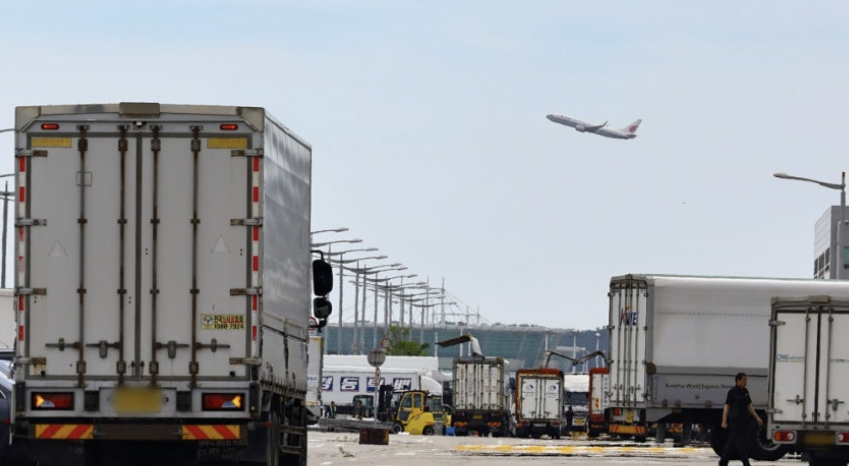EXTRANS GLOBAL - Air Freight News - Week 40 2025
Air Cargo General
- Turkish Airlines to Introduce 75 Additional Boeing Aircraft by 2034 – 50 + 25 Boeing 787s

Turkish Airlines, which operates flights to more countries than any other airline globally, plans to introduce a total of 75 large aircraft, including Boeing 787-9 and 787-10 models, between 2029 and 2034.
Turkish Airlines and Boeing have finalized an order for 50 aircraft with an option for an additional 25. Additionally, as part of its strategic aircraft acquisition plan, the airline has completed an agreement for 150 aircraft, including 100 Boeing 737-8/10 MAX aircraft and an option for 50 more.
As part of its "Vision 2033" to celebrate its 100th anniversary, Turkish Airlines aims to expand its fleet to over 800 aircraft by 2033, with next-generation aircraft accounting for 90% of its fleet by 2033 and 100% by 2035. This will further enhance operational efficiency while maintaining an average annual growth rate of 6%.
Currently, Turkish Airlines operates over 200 Boeing aircraft, including 787-9, 777, 737 MAX, next-generation 737, and 777 freighters. Through this agreement, the airline plans to soon introduce the largest model in the 787 line, the 787-10 Dreamliner.
- Air Cargo Growth Impacted by Freighter Supply Constraints

Atlas Air warns that despite growing air cargo demand, supply constraints such as the retirement of aging aircraft and delays in new freighter deliveries could hinder air cargo growth rates.
Air cargo demand is expected to grow by approximately 4% annually until 2030 (e-commerce +10%, international express +3%, general cargo +2.7%). Supply chains are undergoing changes due to production shifts to Southeast Asia following U.S. tariff measures, as well as China's efforts to target European, Mexican, and South American markets.
With the termination of de minimis rules, Shein is focusing on capturing demand from older U.S. demographics, while Temu is concentrating on new market development. However, supply faces challenges due to the retirement of aging aircraft and delays in new model deliveries, exacerbating freighter supply imbalances.
Global widebody freighter growth is projected at less than 1% annually (655 units in 2025 → 685 units in 2030, a 4.4% increase over five years). Deliveries include 43 units in 2025, 36 in 2026, 35 in 2028, 34 in 2029, and 36 in 2030 (totaling 184 units), but many of these will be offset by the retirement of approximately 130 widebody freighters (e.g., MD-11F).
Delays in new freighter model market entry, with a global aircraft order backlog of 17,000 units, are also significantly impacting supply constraints.
- Trump – 100% Tariff on Pharmaceuticals, 25-50% on Furniture and Large Trucks Starting October 1

President Trump announced on Truth Social on September 25 that, effective October 1, a 100% tariff will be imposed on branded and patented pharmaceuticals from companies without manufacturing facilities in the U.S.
This essentially targets pharmaceutical companies without U.S.-based manufacturing plants. A White House official clarified that countries with finalized trade agreements with the U.S. (e.g., EU and Japan, with 15% tariffs on pharmaceuticals) are exempt.
South Korea secured most-favored-nation status for semiconductors and pharmaceuticals from the U.S. in July, but as the final agreement and signing are still pending, a 100% tariff on South Korean pharmaceutical exports to the U.S. is expected to apply for the time being. This raises concerns about impacts on South Korean pharmaceutical companies exporting to the U.S. (South Korea’s pharmaceutical exports to the U.S. in 2024 were approximately $1.49 billion).
Tariffs of 25% on large trucks, 50% on kitchen and bathroom products (e.g., cabinets, sinks), and 30% on furniture (e.g., sofas, chairs) have also been announced.
These measures are based on investigations under Section 232 of the Trade Expansion Act, which began in April to assess national security threats posed by these items.
- Resumption of International Mail Services from Korea (Post Office) and Germany (DHL) to the U.S.

The Korea Post Service fully resumed international mail services to the U.S. on September 22, which had been partially suspended due to the termination of de minimis rules. Through consultations with U.S. Customs and Border Protection (CBP)-approved tariff prepayment agencies, pathways for tariff declaration and payment have been secured. The service operates on a Delivery Duty Paid (DDP) basis, where senders prepay tariffs via cash or bank transfer. A tariff rate of approximately 15% applies to Korean products, though this may vary depending on the item and origin.
Gifts valued at $100 or less can be shipped without tariffs upon payment of a nominal declaration fee. For example, a postal item valued at 100,000 KRW incurs a fee of approximately 3,250 KRW (including VAT), significantly reducing the fee rate.
DHL Express and DHL Parcel resumed shipments from Germany to the U.S. and Puerto Rico for corporate clients on September 25, four weeks after suspension. For shipments valued at $800 or less, the "Postal DDP" service requires reservation. DHL has overhauled its data collection and tariff payment processes to comply with customs regulations in response to the de minimis termination.
- Airlines Movement
- FedEx (FX): Launched a weekly cargo route: HAN – ICN – CAN.
- DHL Express (D0): Operates a cargo route from HAN via HKG six times weekly (B777, A330).
- Asiana Airlines (OZ): Resumed passenger flights on the ICN – FRA route five times weekly (A380) from September 5 to December 31.
- T’way Air (TW): Suspended passenger flights on the ICN – FRA route four times weekly (A332) from November 9 to 28.

top



